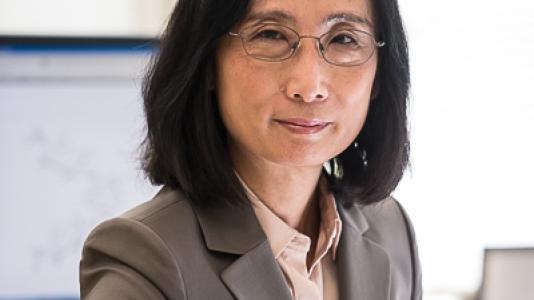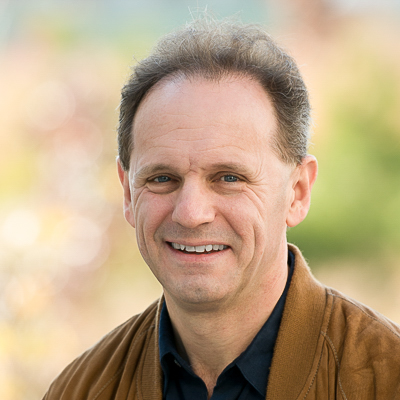
ARGONNE, Ill. – Computational scientist Paul Fischer and chemist Lin Chen of the U.S. Department of Energy’s (DOE) Argonne National Laboratory have been named fellows of the American Association for the Advancement of Science.
Fellows are elected for this honor by AAAS in recognition of their scientifically or socially distinguished efforts to advance science or its applications. This year’s AAAS fellows were formally announced in the AAAS News & Notes section of the journal Science on Nov. 30. The 2012 fellows will be presented with an official certificate and a rosette pin on Saturday, Feb. 16, from 8 to 10 a.m. at the AAAS Fellows Forum during the 2013 AAAS Annual Meeting in Boston.
A senior computational scientist in the Mathematics and Computer Science Division at the laboratory, Fischer was elected as an AAAS Fellow for his outstanding technical accomplishments in computational fluid dynamics (CFD) and fluid flow simulations on extreme-scale computers.
“It’s been a privilege to work at Argonne, where a high level of scientific scholarship and intellectual curiosity is pervasive,” Fischer said.
Fischer earned his Ph.D. degree in mechanical engineering from the Massachusetts Institute of Technology. After a postdoctoral position at Caltech, he was an assistant professor at Brown University in applied mathematics. Fischer joined Argonne in 1998 as a mathematician and was promoted to senior computational scientist in 2008. He also is a senior fellow at the University of Chicago/Argonne Computation Institute.
One of Fischer’s most notable achievements is his design and development of the scalable CFD code Nek5000, which he has applied to challenging problems in the hydrodynamics of nuclear reactors.
“Paul is a great man and a top scientist with interests that span from the most abstract mathematics to the most concrete numerical solvers. It is a pleasure to see his excellence recognized by AAAS,” said Marc Snir, director of the Mathematics and Computer Science Division at Argonne.
Fischer has received several other awards, most notably the University of Chicago Distinguished Performance Awards (2009); the Gordon Bell Prize for High-Performance Computing (1999); and several DOE Innovative and Novel Computational Impact on Theory and Experiment (INCITE) awards. His simulation of the British Petroleum oil spill was shown on NBC Nightly News in 2010. Most recently he received an INCITE award for use of the IBM Blue Gene/Q supercomputer at Argonne to model thermal hydraulics in next-generation reactors, with a focus on verification, validation, and co-design.
Chen is being honored for her “contributions to understanding structural dynamics of molecular excited states with special emphasis on problems related to renewable energy,” according to the AAAS.
Chen is recognized internationally for her ground-breaking contributions in the excited-state structural studies using X-ray transient absorption spectroscopy. At Argonne, Chen’s work has principally involved in the investigation of light-induced energy and electron transfer processes and structural dynamics in both natural and artificial photosynthetic systems. She pioneered synchrotron X-ray transient absorption spectroscopy, which is capable of taking “snapshots” of molecules in motion during photochemical reactions.
“I’m really interested in how molecules respond to light and how light could influence molecular structures and control reactions. These fundamental studies could teach us how to tweak molecules to convert sunlight effectively to other forms of energy, such as electricity and fuels,” she said.
Chen also made significant contributions to understanding the physics of conducting polymers that are capable of converting sunlight to electricity. Much of her research centers on how to use these polymers for “organic photovoltaics,” which are potentially lighter, cheaper and more flexible alternatives to conventional solar cells.
Chen is currently a Senior Scientist in Argonne’s Chemical Sciences and Engineering Division and Professor of Chemistry in Northwestern University’s chemistry department. She earned her Ph.D. in physical chemistry from the University of Chicago. Chen came to Argonne in 1989 after a postdoctoral appointment at the University of California, Berkeley. In 2002, she won the University of Chicago Distinguished Performance Award. She is the Research Council member and served as Committee of Visitors in Chemical, Biological and Geological Science, of DOE’s Office of Basic Energy Science, and advisory committee’s for various international conferences.
The American Association for the Advancement of Science is the world’s largest general scientific society and publisher of the journal Science. AAAS was founded in 1848 and includes some 261 affiliated societies and academies of science, serving 10 million individuals. Science has the largest paid circulation of any peer-reviewed general science journal in the world, with an estimated total readership of 1 million. The nonprofit AAAS is open to all and fulfills its mission to “advance science and serve society” through initiatives in science policy, international programs, science education and more.
About Argonne
Argonne National Laboratory seeks solutions to pressing national problems in science and technology. The nation’s first national laboratory, Argonne conducts leading-edge basic and applied scientific research in virtually every scientific discipline. Argonne researchers work closely with researchers from hundreds of companies, universities, and federal, state and municipal agencies to help them solve their specific problems, advance America’s scientific leadership and prepare the nation for a better future. With employees from more than 60 nations, Argonne is managed by UChicago Argonne, LLC for the U.S. Department of Energy’s Office of Science.
